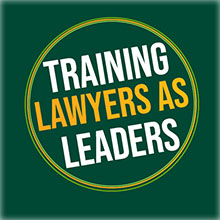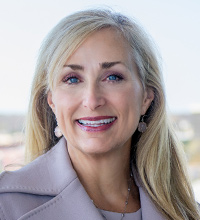By Leah Teague & Stephen Rispoli

Leadership Development Syllabus Series ⢠Part 2: Engaging Students
Part 1 of our LEAD Course Series can be found, here.
In this second post of our LEAD Course series, we share our thoughts on interesting methods to engage law students. This year marks the sixth year of teaching this course and we are constantly making adjustments to the syllabus and our teaching methodologies. In addition to carefully selecting topics, exercises, and speakers, below we discuss three ways we engage the students.
1. Journaling
As noted in a previous post, we require students keep a journal throughout the class. We have come to believe this is one of the most beneficial elements of the class. Not only does it help them personalize and internalize the lessons, it allows us to evaluate their progress in real time throughout the course. We use Box as a file management system and create individual folders for each student. At the end of each class, students are assigned two or three journal entries which are then added to the class syllabus. Students answer these questions and prompts before the next class which allows us to read their answers and gauge understanding and progress.
2. Leadership Quote, Video, or Short Story
Each student signs up to present a quote, video, or short story about leadership in the first three-to-five minutes of a class. This fun exercise allows students to use their creativity (and sometimes add some humor) to present about leadership. The students â both the presenters and the rest of the class â seem to enjoy the activity before jumping into the topic of the day. Interestingly, most students chose topics for their presentation that fit well with the topic for the day.
3. Blog Post
From the beginning we required them to select and read a book about leadership. This year, instead of a book report, they will write a blog post based on the book â a short review or why someone should read (or not read) the book. We think they will be more engaged with the book of their choice and it will allow us to showcase the best ones on this blog!
In our next post in this series we will share the main components of our syllabus. Posts that follow in this series will include a discussion of how we teach each class, PowerPoint presentations, exercises used in class, topics presented by our guest speakers, prompts for journals and feedback from our students.
We know that many of you present similar topics in your courses and want to hear from you. We encourage you to post how you present these topics in the comments to this post. Our hope is that this blog becomes a discussion forum for best practices in teaching leadership in law schools. By going through the syllabus step-by-step, we can have a detailed conversation and share ideas.
Without further ado, our syllabus is here.
To help with the collection and distribution of what other law school leadership programs are doing, we created a repository for syllabi, programs, exercises, articles, presentations, and other leadership development materials. You can view and download the materials, here.
Please add your materials and syllabus!
(You can also upload by emailing [email protected] and attaching the document you want uploaded.)
How do you consistently engage with your leadership students? Have your tried something that didn’t work at all as planned? As we continue this series, we invite your feedback and input in the comments!





